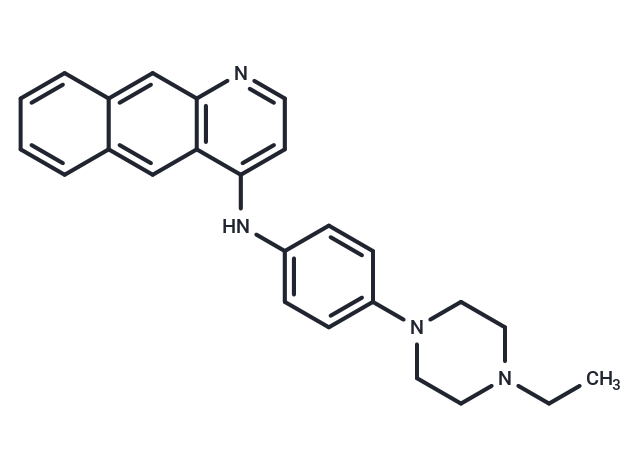Shopping Cart
Remove All Your shopping cart is currently empty
Your shopping cart is currently empty
Quinoprazine, a powerful inhibitor of Vaccinia virus DNA synthesis (IC50 = 10 μM), exhibits notable antimalarial activity against Plasmodium berghei. Additionally, it demonstrates significant antiprion potency, effectively reducing levels of PrPSc [1]-[5].

| Pack Size | Price | USA Warehouse | Global Warehouse | Quantity |
|---|---|---|---|---|
| 25 mg | $1,520 | 6-8 weeks | 6-8 weeks | |
| 50 mg | $1,980 | 6-8 weeks | 6-8 weeks | |
| 100 mg | $2,500 | 6-8 weeks | 6-8 weeks |
| Description | Quinoprazine, a powerful inhibitor of Vaccinia virus DNA synthesis (IC50 = 10 μM), exhibits notable antimalarial activity against Plasmodium berghei. Additionally, it demonstrates significant antiprion potency, effectively reducing levels of PrPSc [1]-[5]. |
| In vitro | Quinoprazine exhibits antimalarial properties against the chloroquine-resistant Plasmodium berghei strain, LN-K65 [1], and impedes Vaccinia Virus infection by obstructing DNA synthesis [2]. As IND2118, it demonstrates significant antiprion efficacy by reducing PrP Sc levels by 76% in dividing cells and 51% in nondividing cells, with reductions over 30% regarded as potent [3] [4]. Moreover, IND2118 has low cytotoxicity, diminishing cell viability by only 25% in dividing cells and 24% in nondividing cells, with reductions below 30% considered safe [3] [4]. |
| In vivo | Quinoprazine, a 1-alkyl-4-[4-(heterylamino)phenyl]piperazine derivative, effectively suppresses Echinococcus multilocularis larvocyst growth in cotton rats at a dosage of 0.25 g/kg intraperitoneally (i.p.) in a single dose. Furthermore, at oral (p.o.) dosages ranging from 0.2 to 0.5 g/kg, it radically eradicates adult Hymenolepis nana infections in mice, as demonstrated in experimental studies [5]. |
| Molecular Weight | 382.5 |
| Formula | C25H26N4 |
| Cas No. | 115618-99-0 |
| Storage | Powder: -20°C for 3 years | In solvent: -80°C for 1 year | Shipping with blue ice/Shipping at ambient temperature. |
| Size | Quantity | Unit Price | Amount | Operation |
|---|

Copyright © 2015-2025 TargetMol Chemicals Inc. All Rights Reserved.